Cheat Sheet: Supreme Court | Indian Polity for UPSC CSE PDF Download
Introduction
This chapter outlines the structure, composition, powers, and significance of the Indian judiciary, focusing on the Supreme Court of India. It covers the judicial system's organization, the appointment and qualifications of judges, their tenure and removal, and the Supreme Court's jurisdiction and powers. The chapter also explains judicial review, its scope, and its role in upholding the Constitution.
Integrated Judicial System
The Indian judiciary operates as a single, unified system with the Supreme Court at its apex, followed by High Courts and subordinate courts. Unlike the USA, which has separate federal and state judicial systems, India’s integrated system enforces both Central and State laws under one framework.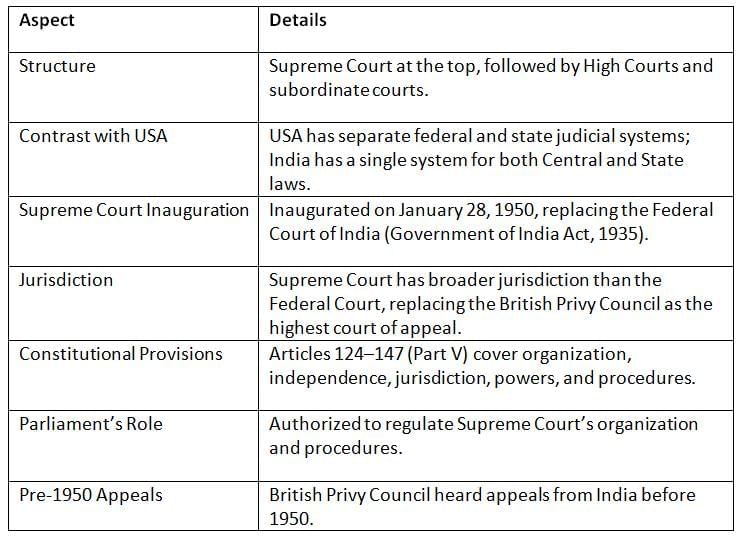
Key Points:
- The integrated judicial system ensures uniformity in justice delivery across India.
- The Supreme Court’s establishment in 1950 marked a shift from colonial judicial structures, with expanded powers and constitutional backing to regulate its functions.
Composition and Appointment
The Supreme Court’s composition has evolved over time, with its strength increasing to meet judicial demands. The appointment process involves the President and judiciary, with significant debates over the consultation process, culminating in the Collegium system.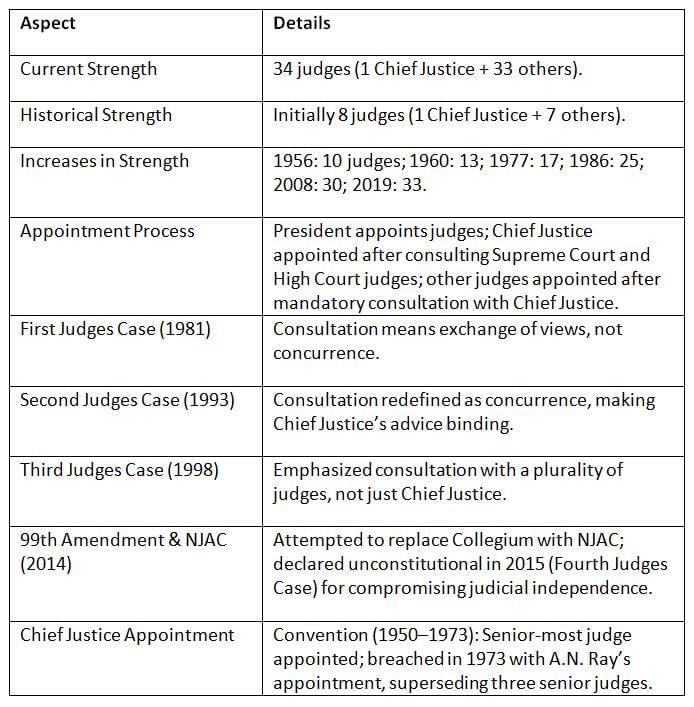
Key Points:
- The Supreme Court’s strength has grown to handle increasing caseloads.
- The appointment process, shaped by the Collegium system, ensures judicial independence, though controversies like the NJAC highlight ongoing debates over executive influence.
Qualifications, Oath, and Salaries
Supreme Court judges must meet specific qualifications, take an oath, and receive salaries and benefits determined by Parliament. These provisions ensure competent and independent judges.
Key Points:
- Strict qualifications ensure competent judges, while the oath reinforces impartiality.
- Stable salaries and benefits protect judicial independence, with recent increases reflecting the judiciary’s importance.
Tenure and Removal
Supreme Court judges have no fixed tenure but serve until age 65. Removal is a rigorous process to protect judicial independence, requiring parliamentary approval and specific grounds.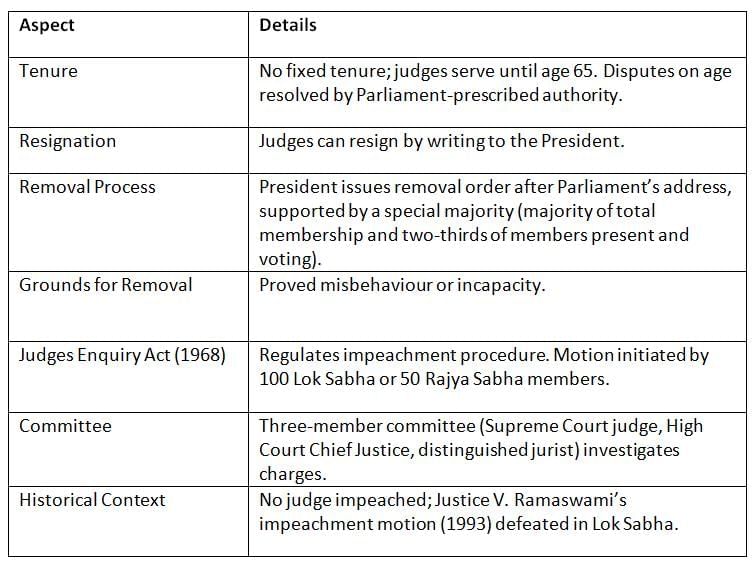
Key Points:
- The tenure and removal processes safeguard judicial independence by ensuring judges serve without fear of arbitrary dismissal.
- The high threshold for removal underscores the judiciary’s autonomy.
Acting, Ad Hoc, and Retired Judges
Provisions for acting, ad hoc, and retired judges ensure continuity in the Supreme Court’s functioning during vacancies or increased workloads.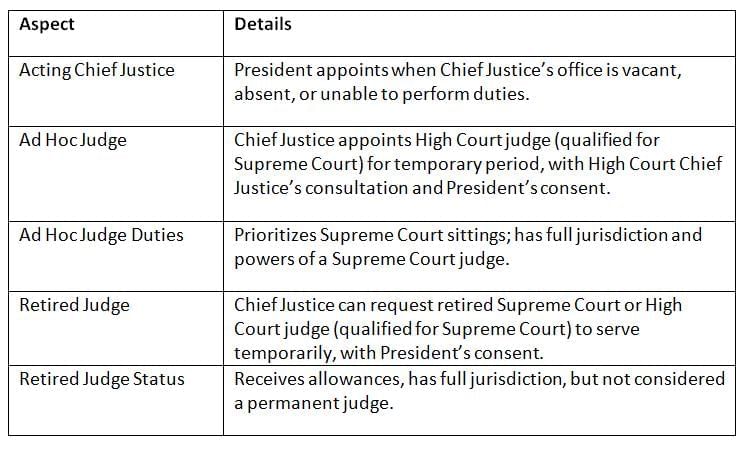
Key Points:
- These provisions ensure flexibility in managing judicial workload, maintaining the Court’s efficiency during temporary shortages or special circumstances.
Seat and Procedure
The Supreme Court’s seat and procedural rules are designed to ensure accessibility and efficiency in its operations, with flexibility for the Chief Justice to designate additional locations.
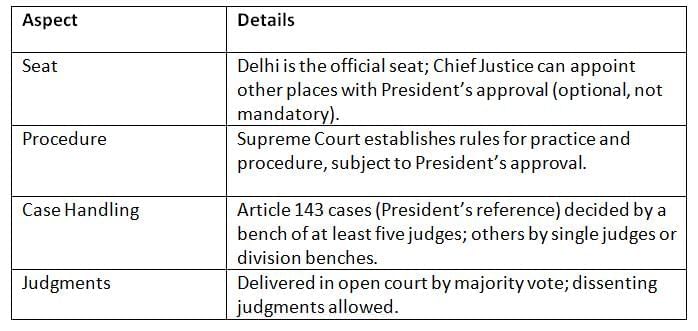
Key Points:
- Delhi as the primary seat ensures centralized functioning, while procedural flexibility allows the Court to adapt to varying judicial needs.
- Open judgments promote transparency.
Independence of the Supreme Court
The Supreme Court’s independence is critical for its role as a federal court, appellate court, and guardian of fundamental rights. Constitutional provisions protect it from executive and legislative interference.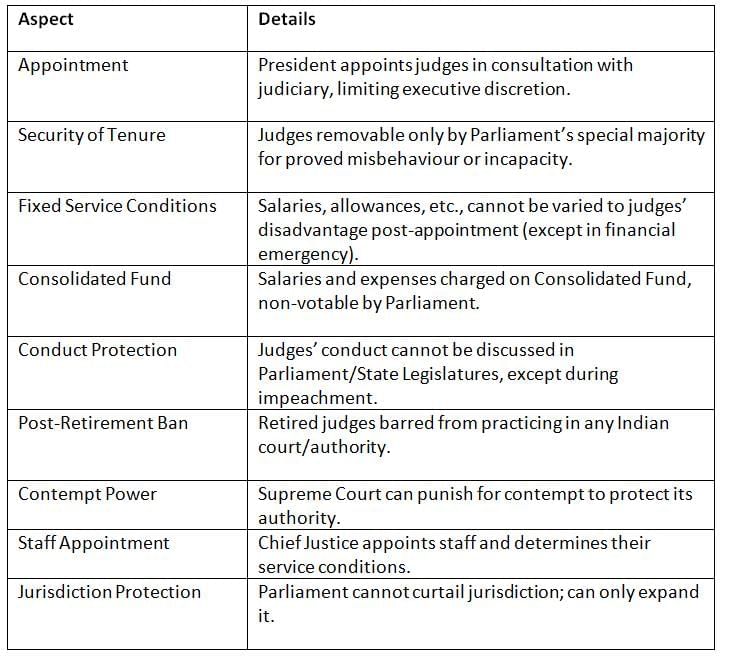
Key Points:
- These measures ensure the Supreme Court operates impartially, free from external pressures, safeguarding its role as the Constitution’s protector.
Jurisdiction and Powers
The Supreme Court’s extensive jurisdiction includes original, writ, appellate, advisory, and judicial review powers, making it a multifaceted institution compared to counterparts like the American Supreme Court.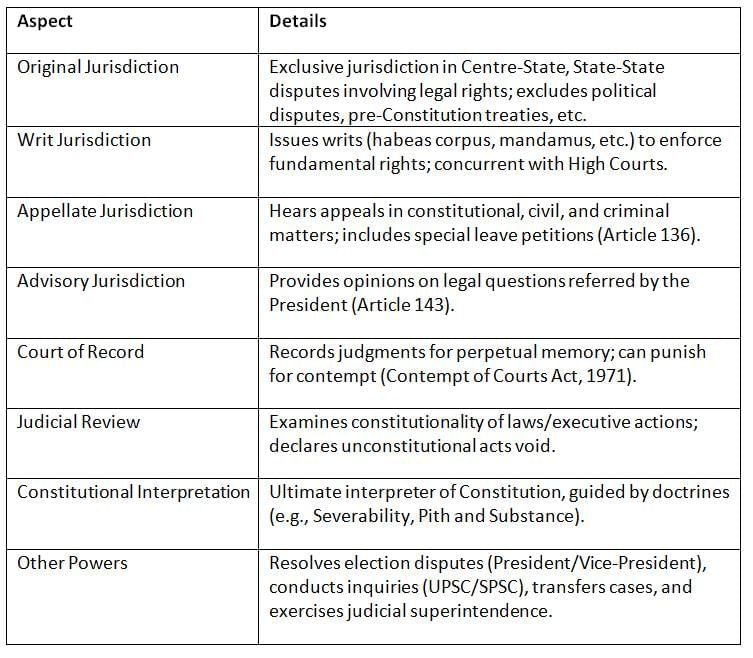
Key Points:
- The Supreme Court’s broad jurisdiction enables it to act as a federal arbiter, protector of rights, and constitutional interpreter, with powers surpassing many global counterparts.
Judicial Review
Judicial review empowers the Supreme Court and High Courts to ensure laws and actions align with the Constitution, protecting fundamental rights and maintaining constitutional supremacy.
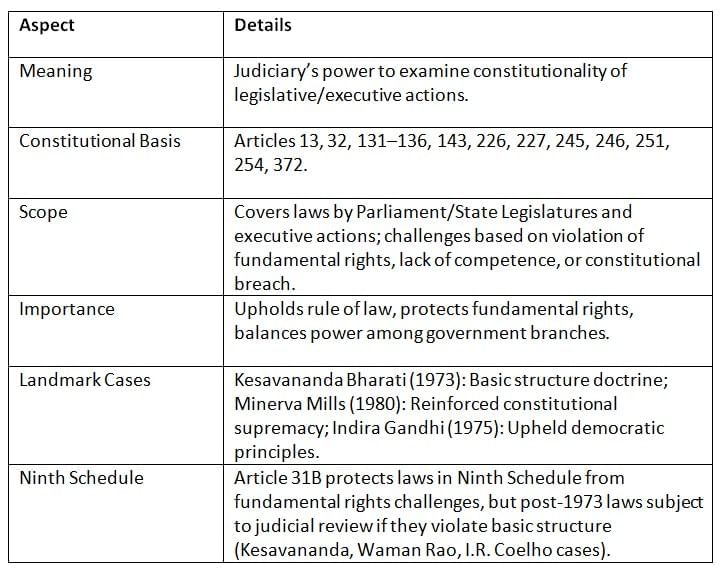
Key Points:
- Judicial review is a cornerstone of India’s constitutional framework, ensuring checks and balances.
- The basic structure doctrine limits legislative overreach, particularly for Ninth Schedule laws.
Comparison with American Supreme Court
The Indian Supreme Court’s jurisdiction and powers differ from the American Supreme Court due to India’s integrated judicial system and constitutional framework.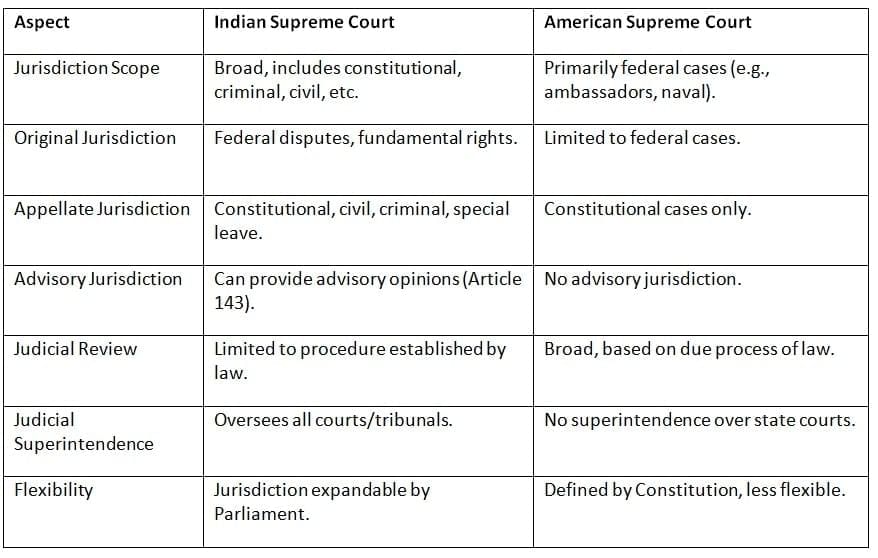
Key Points:
- The Indian Supreme Court has broader and more flexible powers than its American counterpart, reflecting India’s integrated judicial system and constitutional needs.
Chronology of Key Events
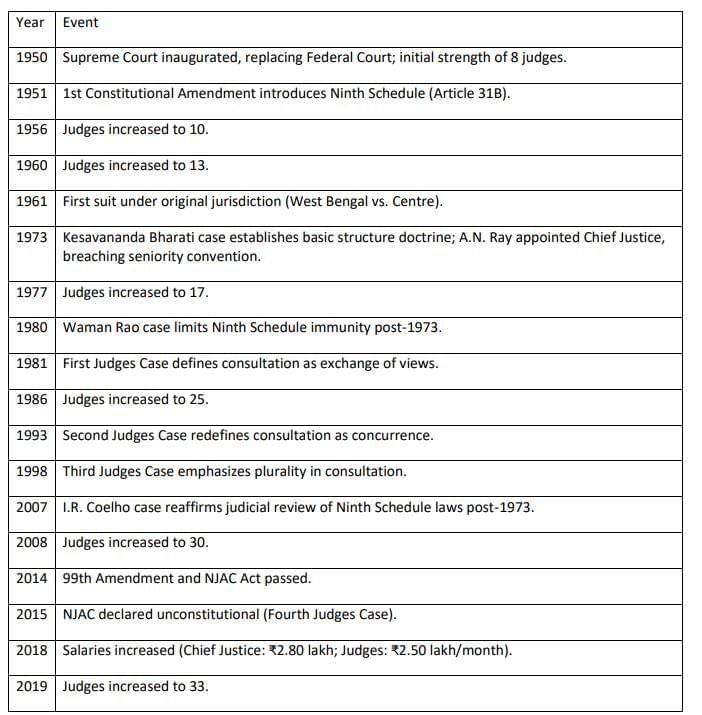
Conclusion
This chapter highlights the Indian judiciary’s structure, with the Supreme Court as its cornerstone, ensuring justice through its integrated system, extensive jurisdiction, and independence. Understanding its composition, appointment processes, and powers, including judicial review, is crucial for appreciating its role in upholding the Constitution and protecting citizens’ rights. The judiciary’s ability to check legislative and executive actions reinforces India’s democratic framework, making it a vital pillar of governance.
|
154 videos|973 docs|260 tests
|
FAQs on Cheat Sheet: Supreme Court - Indian Polity for UPSC CSE
| 1. What is the composition and appointment process of the Supreme Court judges? |  |
| 2. What qualifications are required for a person to be appointed as a Supreme Court judge? |  |
| 3. How is the independence of the Supreme Court ensured? |  |
| 4. What are the tenures and removal processes for Supreme Court judges? |  |
| 5. What is the jurisdiction and power of the Supreme Court? |  |





















